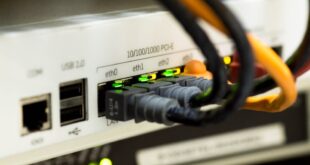In the world of technology, the Internet of Things (IoT) has introduced a new paradigm shift in terms of the way people live and interact with the world around them. The IoT leverages the interconnectivity of physical devices embedded with sensors, software, and other technologies that allow them to collect and exchange data over the internet. IoT applications span various industries, including manufacturing, logistics, healthcare, and smart homes, all requiring expertise from software development, hardware engineering, and operational teams.
However, IoT development can be a complex and often challenging process. Since IoT development brings together numerous teams that are expected to collaborate throughout the development lifecycle, communication and alignment between the teams can be a significant hurdle. In response to this challenge, DevOps has become increasingly popular as a software development methodology that emphasizes collaboration and communication between development and operations teams.
This article will explore how DevOps can enable better collaboration during the IoT development process.
What is the Internet of Things (IoT)?
The Internet of Things (IoT) is a network of physical objects that use sensors and embedded technology to communicate and interact with each other over the internet. These objects can be anything from refrigerators and cars to wearable devices and robots, each designed to collect, analyze, and interact with real-world data.
IoT has transformed many industries by introducing new levels of efficiency, productivity, and connectivity. IoT has made it easier to monitor and optimize production processes, track logistics in real-time, enhance patient care in healthcare settings, and home automation, to name a few.
What is DevOps?
DevOps is an Agile methodology that emphasizes communication and collaboration between development and operations teams to improve the quality and speed of software releases. DevOps enables organizations to keep up with the fast-paced and ever-changing IT environment.
DevOps brings together the best practices of software development, quality assurance, and IT operations. The DevOps philosophy is to eliminate silos and bring together the different teams involved in software development, including developers, operations engineers, and quality assurance testers. Teams in a DevOps organization are expected to collaborate and communicate regularly, to ensure a seamless process from the beginning of the development lifecycle to the deployment and operation.
If you need to streamline your software development lifecycle, improve the quality of your software releases and enhance collaboration and communication between dev and ops teams, hire DevOps engineers.
Importance of Collaboration in the IoT Development
IoT development can be a complex process that requires collaboration between different teams, including hardware engineers, software developers, data scientists, and operational personnel. The traditional approach to software development often separates these teams into silos, which can hinder communication, reduce visibility, and result in project delays.
This approach can be detrimental to IoT development since IoT solutions are composed of hardware and software components closely intertwined with each other. IoT development involves a variety of tasks, such as designing, building, testing, and deploying applications. IoT solutions also require additional testing to ensure that the hardware is performing as expected and that the software is communicating correctly with the hardware.
Therefore, to ensure that IoT solutions meet the expected functionality, reliability, and security, collaboration between hardware, software engineers, and operations is critical. DevOps is one methodology that can enable better collaboration in the IoT development process.
How DevOps Enables Collaboration in IoT Development
Here are the ways that DevOps can enable better collaboration in IoT development.
Shared Responsibilities
One of the most essential aspects of DevOps is shared responsibilities, allowing operations and development teams to share tasks and work collaboratively. The IoT development process can benefit significantly from this approach, where hardware and software engineers, data scientists, and operations personnel can all work together to design, build, test, and deploy IoT applications.
Shared responsibility and cross-functional teams reduce silos and enable teams to work together to achieve a common goal. Teams must approach development collaboratively to ensure that all aspects of the project, from hardware to software, are compatible and working as expected.
Continuous Integration and Delivery (CI/CD)
Another significant principle of DevOps is that of continuous integration and delivery (CI/CD). CI/CD automates the build, test, and deployment phases of the development lifecycle to ensure that software is deployed efficiently, quickly, and with fewer errors.
In IoT development, CI/CD can facilitate faster testing of hardware and software components and enable more frequent updates to IoT applications. It can also help streamline testing and production processes by reducing the time and effort needed to complete tasks manually.
Early and Frequent Testing
Testing is a crucial aspect of any software development process, and this is even more so in IoT development. Since IoT comprises both hardware and software components, testing must occur continuously throughout the project’s lifecycle.
DevOps approaches to testing in IoT development emphasize early and frequent testing to detect mistakes as early as possible, enabling teams to respond quickly and fix issues without disrupting the development timeline. By incorporating testing from the outset, development teams can catch errors, identify design flaws quickly, and ensure that IoT applications meet the expected performance and reliability standards.
Monitoring and Analytics
In DevOps, monitoring and analytics are also considered critical aspects of the development process. Monitoring can help teams track the performance of devices, sensors, and software, identify potential issues, and fine-tune IoT applications to meet changing user needs.
Ops teams can leverage monitoring and analytics technologies to gain insights into how IoT applications are performing, track trends, and make data-driven decisions to improve performance and reliability.
Conclusion
IoT development can be a complex process that requires collaboration between multiple teams to ensure a successful project outcome. DevOps is a methodology that can enable better collaboration in the IoT development process by emphasizing shared responsibilities, continuous integration and delivery, early and frequent testing, and monitoring and analytics.
By adopting a DevOps approach to IoT development, teams can more efficiently design and build IoT applications, catch errors earlier in the development process, and deliver updates and enhancements more quickly and reliably.
As IoT continues to reshape the industrial world, adopting a DevOps approach to development is essential for delivering reliable, scalable, and successful IoT solutions. Investing in DevOps can help IoT development teams to overcome communication barriers and create solutions that can transform the world.
 Being Human
Being Human




